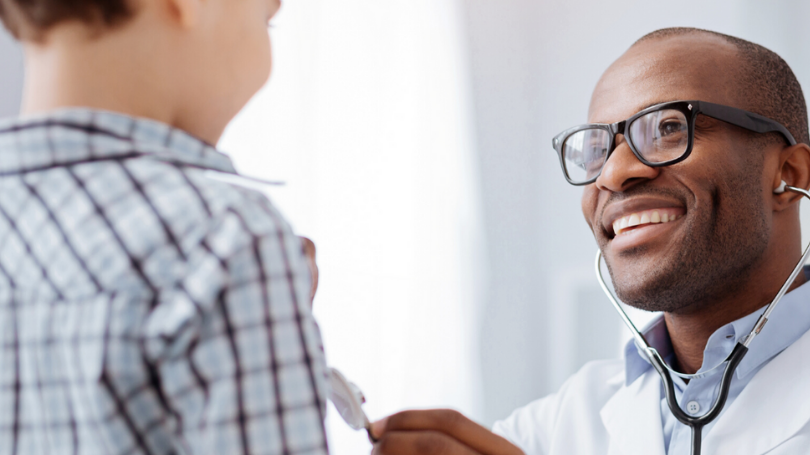A Brief History on the Stethoscope (Your Auscultation Skills Matter!)

Wearing your stethoscope and listening to patients’ hearts are two things you probably do every day if you are in practice. But, have you thought about where the stethoscope comes from and the history of the auscultation techniques that you use each day?
The Difference Between “Immediate Auscultation” and “Mediate Auscultation”
Immediate auscultation is the act of a physician actually putting their ear up to the chest and abdomen of their patient. The method of immediate auscultation was used up until 1816. As you can imagine, using this technique came along with social stigma and technical restrictions. The inventor of the stethoscope, René Théophile Hyacinthe Laennec, wrote that immediate auscultation was “as uncomfortable for the doctor as it was for the patient, disgust in itself making it impracticable in hospitals, It was hardly suitable where most women were concerned…”
Discovery of a New Method, Mediate Auscultation
In 1816, René Théophile Hyacinthe Laennec discovered a new method of listening to a patient’s heart, later called mediate auscultation. He was treating a young female patient who was showing symptoms of heart disease. He didn’t want to apply his ear to her chest due to the social stigmas of the time, so he turned to the new method.
So, he rolled up a piece of paper into a cylinder shape and put one end of it on her heart and the other to his ear. He wrote that he was able to “perceive the action of the heart in a manner much more clear and distinct than I had ever been able to do by the immediate application of the ear.” He later used a similar tool to the paper cylinder, only it was made of wood and could be deconstructed to be carried around more easily.
The development of the electronic and digital stethoscopes has brought about a new era of computer-aided auscultation. In recent years, physical exams are becoming less and less frequent because of these technological advances. Like the digital stethoscope, these advancements have improved diagnostic tests, especially for doctors with hearing loss, making these exams less necessary. So why do we still do them?
Auscultation Can Help You Bond with Your Patients
Physical touch is one of the most effective ways to improve your relationship with patients. Your physical touch can help reduce your patient’s anxiety and even have healing effects! Plus, auscultation helps you understand whether or not your patients require immediate medical attention. Listening to your patient’s heart sounds can even be good as preventative medicine.
At MedStudy we’d like to call attention to the importance of auscultation in the physician/patient relationship. That’s one of the main reasons we created Heart Sounds. You can review all the essential heart knowledge you need to know, practice your auscultation skills, and take advantage of the science-backed study strategies we’ve researched over the years so you can save time and build your knowledge in the most effective way possible.
So, in honor of American Heart Month (February!), we challenge you to take some time to reevaluate your auscultation knowledge and skills by getting MedStudy Heart Sounds™ for 24 months. Still not sure? Try it for free for 24 hours. Who knows—you might just learn something new.


